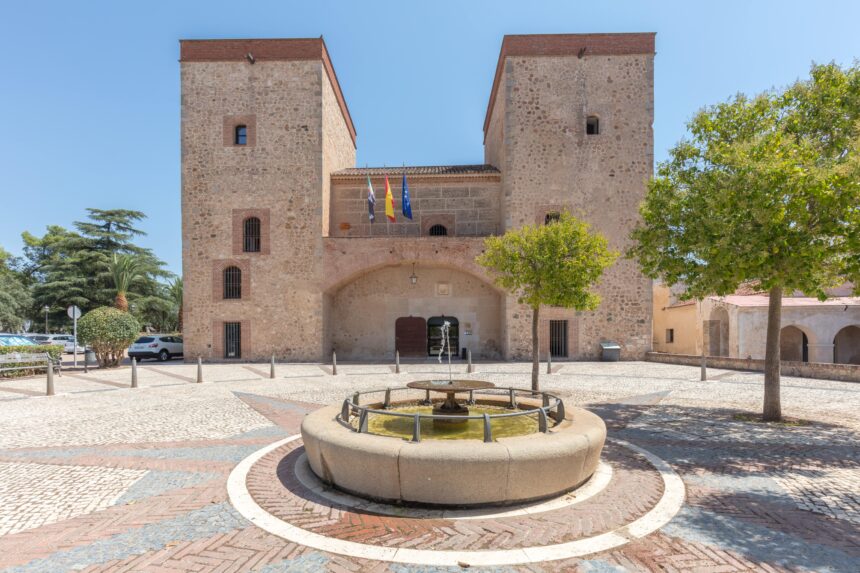The Archaeological Museum of Badajoz and the Findings from El Turuñuelo
by Irene Montaño Dávalos
In April 2023, a gaze from thousands of years ago was discovered.
What appeared to be goddesses, or important women, emerged from the archaeological site of El Turuñuelo, in the province of Badajoz in Spain. For the first time, it was possible to put a face to a culture that, up until that moment, was believed to have no anthropomorphic depictions.
The ancient culture of Tartessos, the most developed one in the Southwest of Europe, was described by Herodotus as a land full of riches, with silver and gold, ruled by a mythic king called Arganthonios. Although the unearthed sculptures do not represent this mythological king – they probably portray goddesses or socially relevant women – what can be said without any doubt is that these faces have captivated all who have set their eyes on them. And it is not wonder, considering thatchy are the first sculptural works from this ancient culture that have ever been found. Everybody wants meet. these mysterious ladies. They will be displayed in the Archaeological Museum of Badajoz. A humble palace for them.
On the top of a hill in Badajoz, Spain, surrounded by mediaeval walls, there is a little palace from the 16th century, Palacio del Conde de la Roca, where there was once the Alcazaba. Although it has gone almost unnoticed for most of its existence, during the last three weeks it has gained a lot of attention.
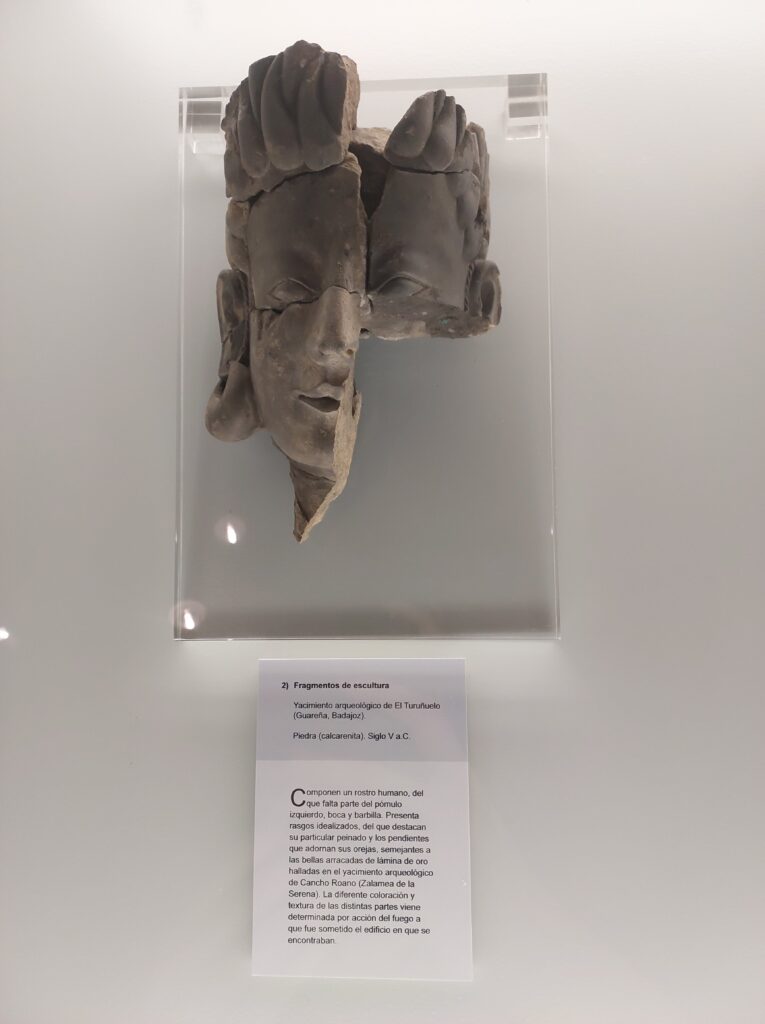
These sculptures have been a kind of fairy godmother for the museum because they have given it the opportunity to show its excellent archaeological collections.
While people swirl around the sculptures from Tartessos, others decide to wander around and appreciate the permanent collection, which stretches from Prehistory to the 16th century. Phoenician ivories, stone steles from warriors, ancient Roman sculptures from cities that have long since vanished -all rediscovered by curious eyes, in the same way that the faces from Casas del Turuñuelo have been.
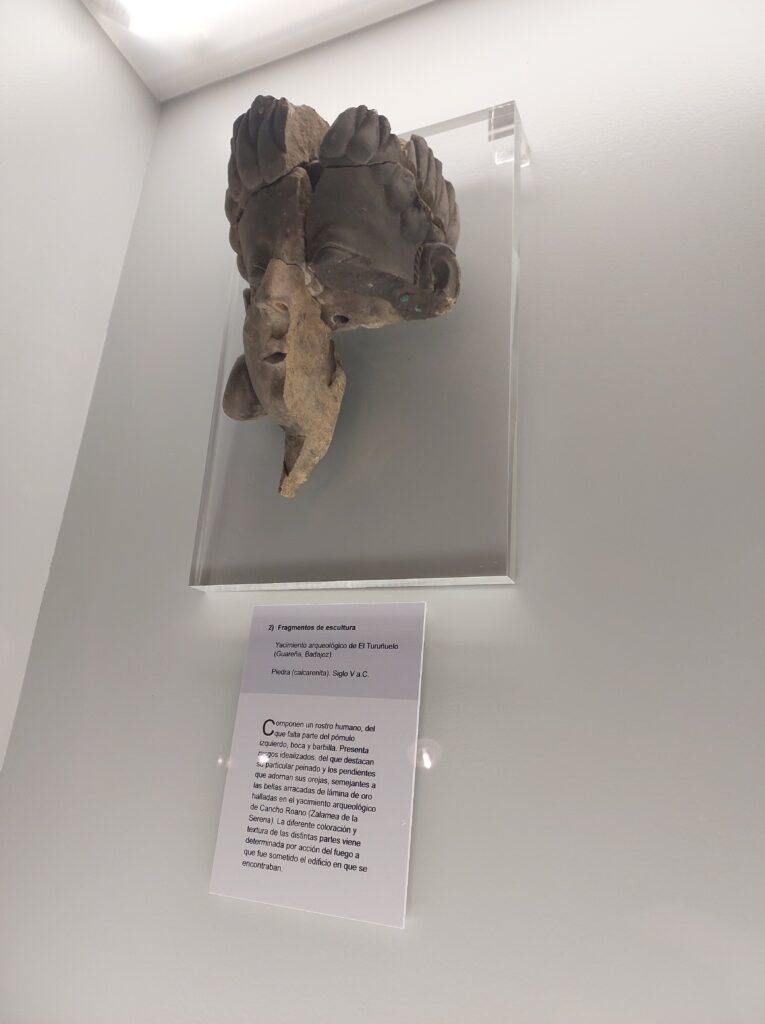
It is ironic that the most remote past, the culture of Tartessos, is the one that is helping to bring a bright present and future to the institution. These discoveries have not only increased the interest in the region’s archaeology and history among the general public, but also among institutions. We can talk of a little”golden age” of archaeology in the region, with archaeological excavations around the province, like Cancho Roano and La Mata de Campanario, bringing up artefacts from as early as 2500 BCE. These artefacts show how the Tartessian culture was in contact with other cultures from the East Mediterranean, like the Phoenician and Greeks.
And so, in the words of Javier Heras Mora, Director of the institution, the museum’s debt is to give back these artefacts to the population, given that it is thanks to the people and their invested interest, that these objects can be appreciated again. It is the museum’s role to give context, explain the history behind every piece, to “make them talk” about the people that lived there thousands of years ago, there lives, way of thinking, etc. It’s refreshing to see how people still have so much curiosity about their past and, given the opportunity, support the museum in any way they can, even if it’s just by word of mouth.
This revitalisation of the museum, however, raises some questions: Is the museum ready for the new challenges that are emerging with every new discovery? What can the museum say about the history of the region?
A question that has surfaced in the last decades in museology, is how museums, starting with the physical buildings, can interact with their collections and the history of their surroundings. When visiting the palace for the first time in a long time, one can see the care in the reconstruction of the building. With some mudéjar architectural elements in the façade, and some windows in the horseshoe arch, a classic element in Islamic architecture, once inside, it follows the spatial disposition of a palace from the 16th century, the halls move around an open and central patio, easing the wandering. This two-floor palace has been a museum for a century and a half and after some decades of hiatus, it reclaimed its position as a museum again in the ’70s. The exhibit follows a chronological order with some interesting surprises, like suddenly finding ivory combs from Egypt, or glass paste pendants from Phoenicia, providing a different vision of the communication and trade routes among the diverse cultures in the Mediterranean, specially between the East and West sides of the sea, and how their cosmopolitan activities influenced the region.
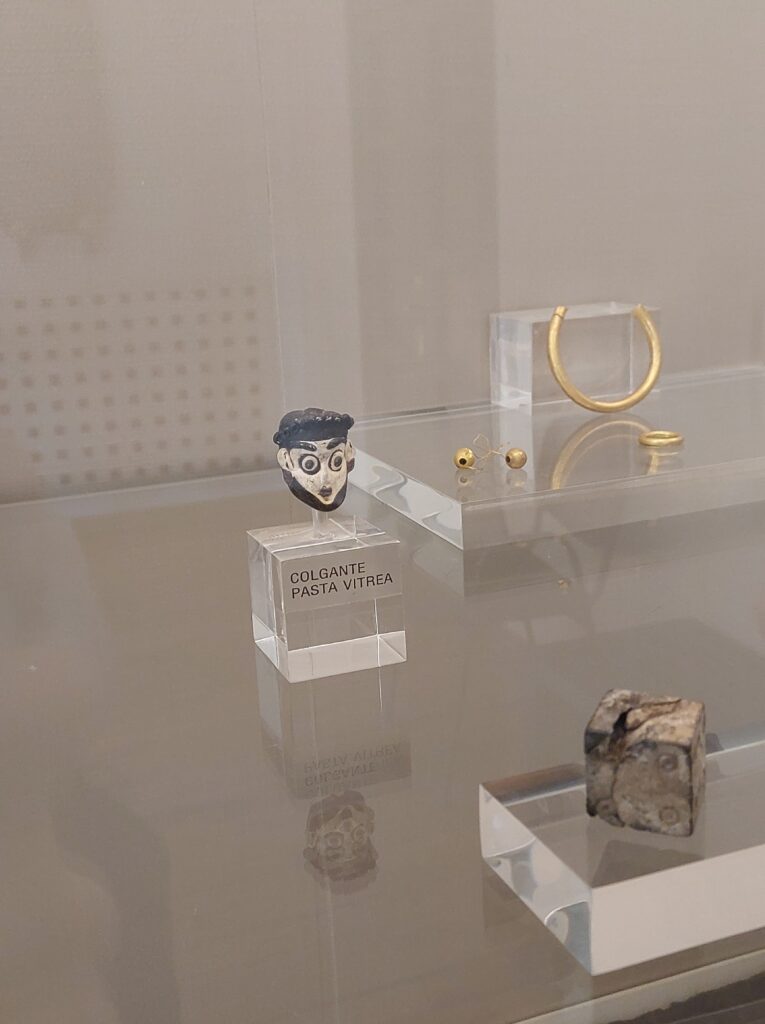
Does the building have any kind of dialogue with its collection? Well, it is located in the historical part of the city, and the historicity of the building is evident, even if only a small part of the original remains after being in ruins for decades. Another positive point here is that it is approachable -you can look at the artefacts without feeling overwhelmed by the place, giving you time to assimilate what you are observing. On on hand, it allows proximity to the pieces, but on the other it does not provide visitors with a lot of historical context, making the pieces feel isolated. A map with the archaeological site would be appreciated, to better communicate a sense of shared history and continuity of history in Badajoz.
And communication must be the key word when talking about museums. It’s their main purpose, after all. It is for this reason that it is desirable to have a more coherent discourse during the tour. One wonders if maybe this sensation is due to the lack of investment in the archaeology of the province until recent years, inadvertently creating a nebulous perception of the region’s history. On a positive note, this can be seen as another reason why the sculptures from Casas del Turuñuelo can be a great turning point for the museum, not only with regard to tourism but because it can strengthen and make more available the region’s historical discourse, encourage people to ask questions, search for answers, and not passively observe the pieces in the room.
Another thing to consider, is that what remains from a visit to a museum, is what you felt, the “vibe”, so to say; it is not possible to remember everything that one has seem in a museum, but the environment, the sensations, the lights, how the pieces were displayed and explained, that is what remains in our memory. The museum is where you learn about. the history of others, and make it part of you and your perception of the world.
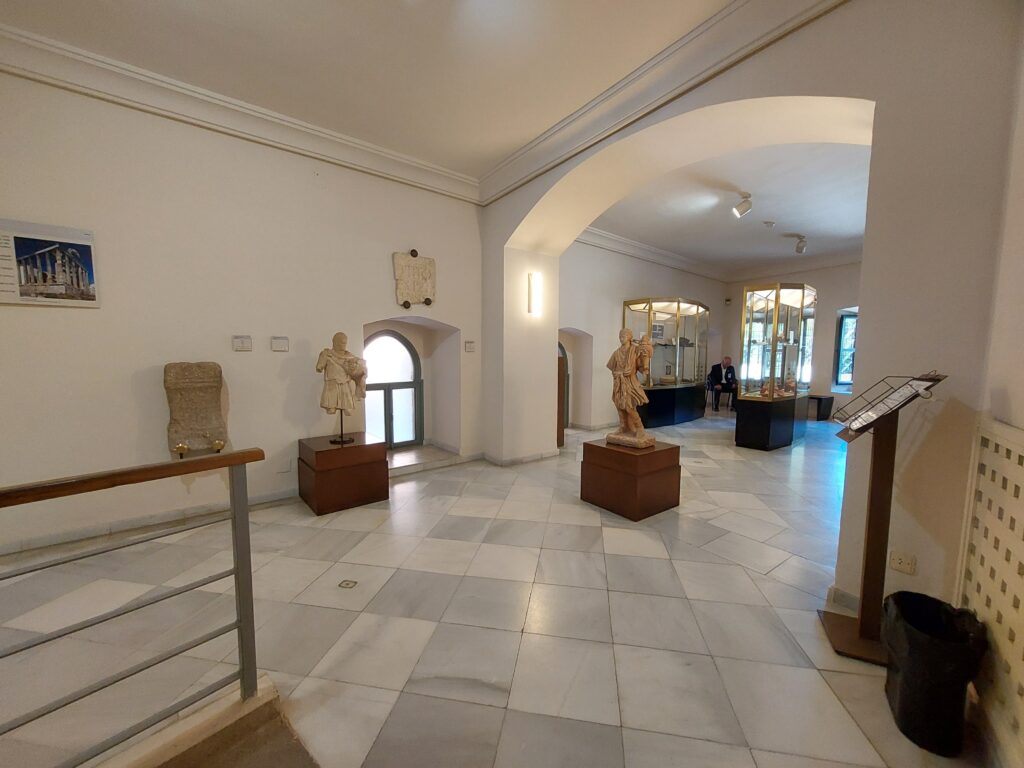
And this is why the museum’s collections can be very interesting because they show how in the past everything was connected, how some cultures influenced others. (For example, it deserves mentioning the display cabinets containing everyday objects, pottery, etc. from the Moorish Kingdom of Badajoz alongside those from the Kingdom of Leon after the Reconquista, showing the cultural differences between the two kingdoms, but also how at the end of the day, most of those objects were related, independently of where they came from. This could provide a very interesting discourse on life in that historic period where diverse cultures coexisted).
It’s humankind’s history that we are talking about when we visit museums. All those artworks and artefacts were created because a long time ago someone wanted to say something, express themselves, or simply needed to to live their lives. The least we can do, then, is make it easier for people nowadays to understand them better, and see how we are not that different from our ancestors.
The Archaeological Museum of Badajoz has gotten a good hand of cards, and if they play them well, the museum can have a good future ahead. It is with this idea, with the relevance of the sculptures from El Turuñuelo, that can help the Archaeological Museum of Badajoz gain a more cohesive discourse, male the history of the region more understandable, and encourage different exhibition formats that make the museum experience more immersive. It has some incredible collections that deserve to be seen and appreciated by everybody.
If you wish to contact the author of this article, please send an email to community@europeanheritagetimes.eu
